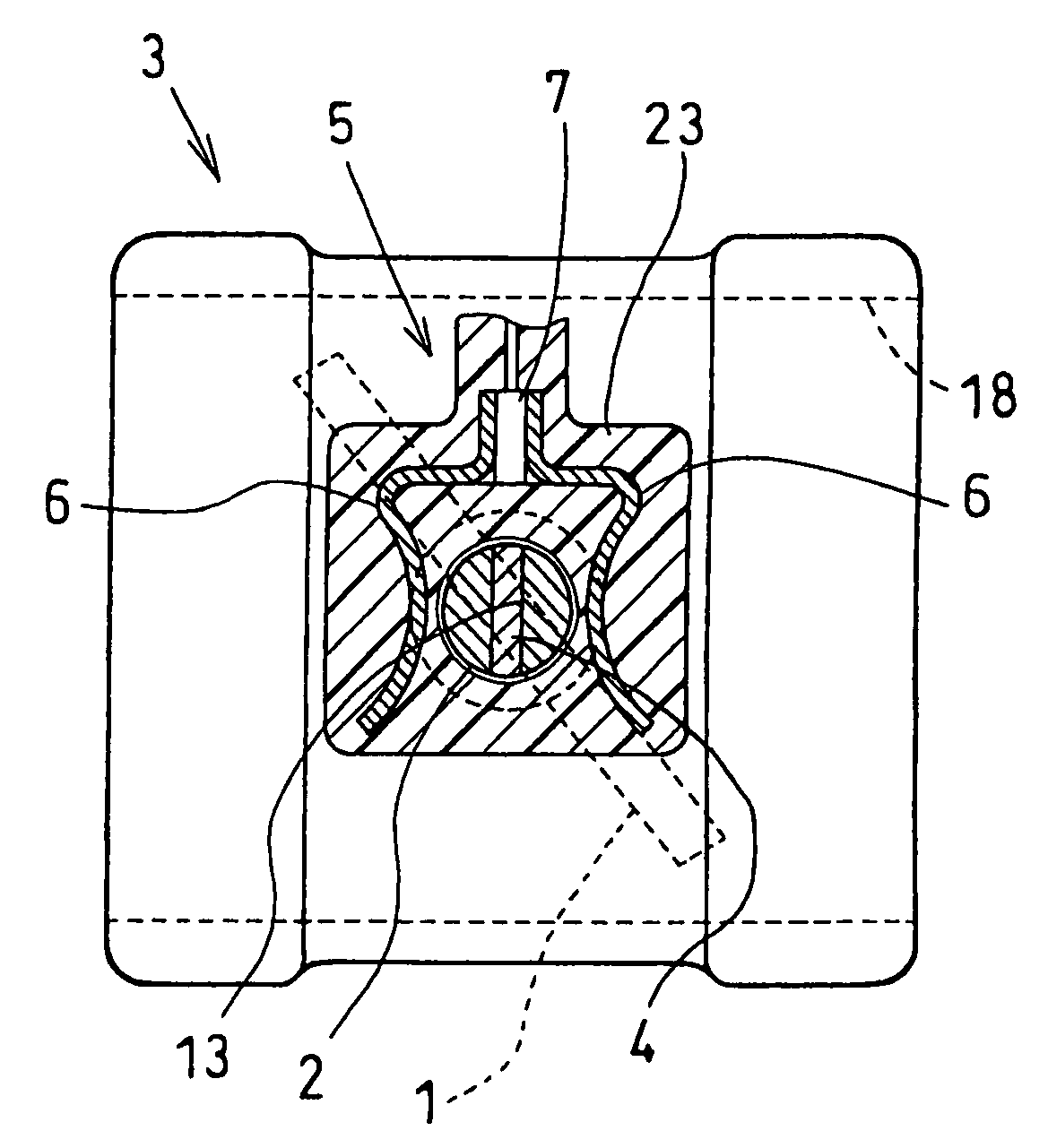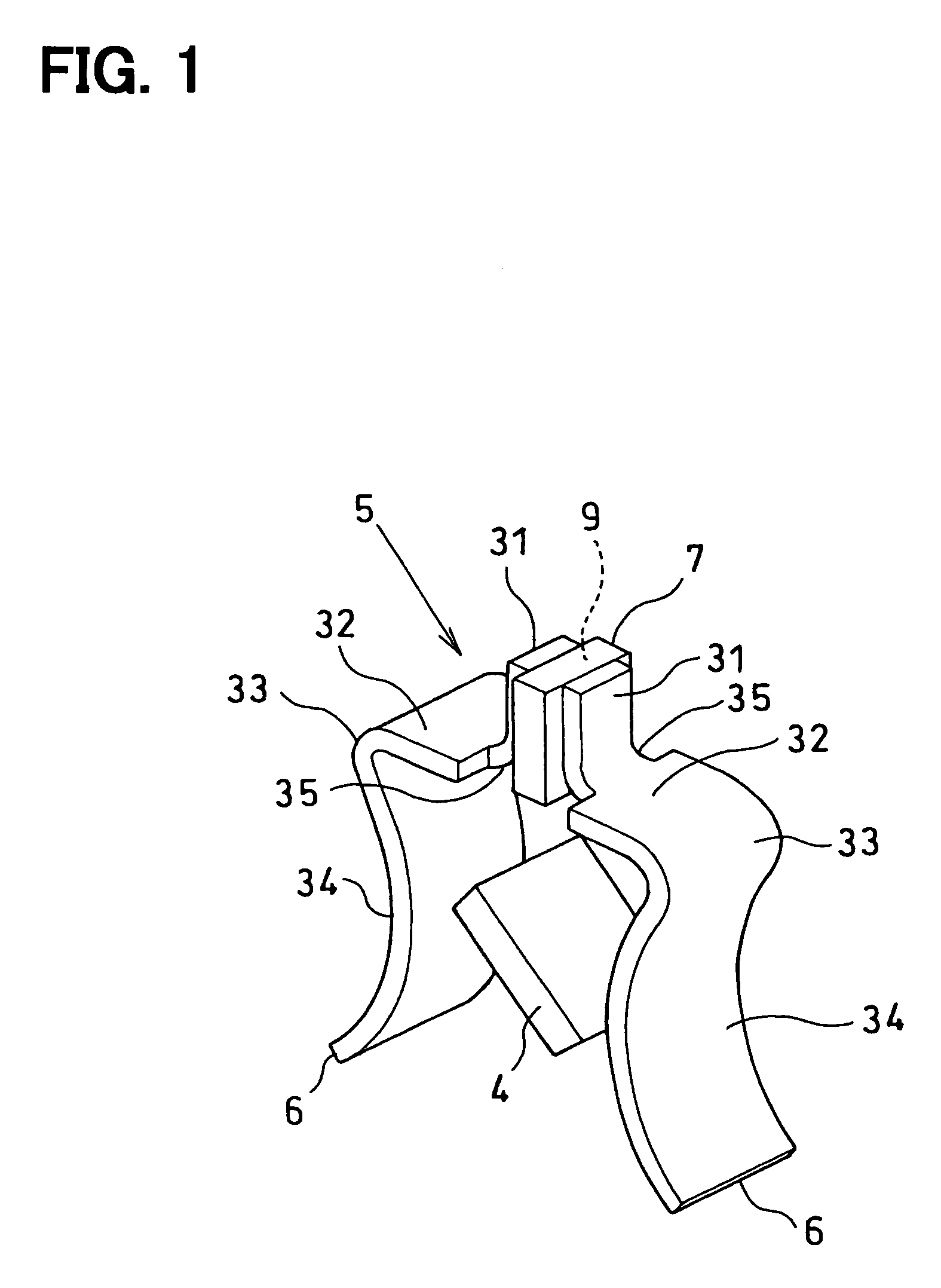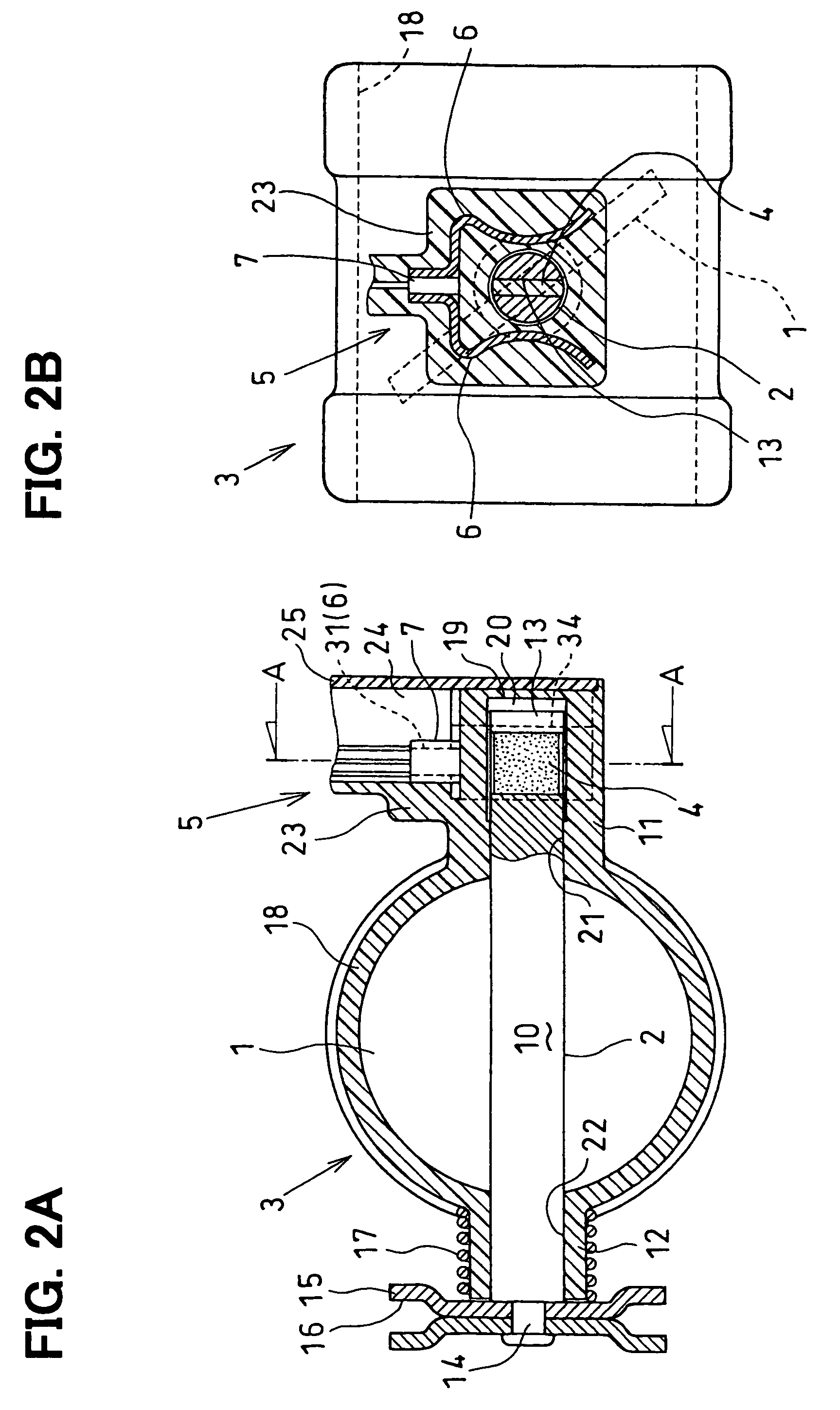Rotation angle detecting device
a detection device and rotation angle technology, applied in the direction of measurement devices, instruments, magnetic measurements, etc., can solve the problems of increased cost, lowered detection accuracy of the rotation angle of the magnet 107 with the rotation of the object to be measured, and increased components and assembly steps. the effect of increasing the linearity of the output signal
- Summary
- Abstract
- Description
- Claims
- Application Information
AI Technical Summary
Benefits of technology
Problems solved by technology
Method used
Image
Examples
first embodiment
[0034]FIGS. 1 through 6 show the present invention where FIG. 1 is a view showing a throttle opening sensor and FIG. 2 is a view showing an inlet throttle device for internal combustion engine.
[0035]The inlet throttle device for internal combustion engine is a throttle device for an internal combustion engine, for controlling an engine revolution rate or an engine torque by changing the amount of intake air flowing into a combustion chamber of a cylinder of an internal combustion engine (for example, an engine for two-wheeled vehicle; hereinafter, referred to as an engine) based on the amount of operation of an accelerator by a driver (for example, the amount of operation of a throttle lever). The inlet throttle device for internal combustion engine includes a throttle valve 1 for controlling the amount of intake air sucked into the cylinder of an engine; a throttle shaft 2 cooperatively rotating with the throttle valve 1; a throttle body 3 through which the intake air toward a cyli...
second embodiment
[0064]FIG. 7 shows the present invention, illustrating an inlet throttle device for internal combustion engine.
[0065]In this embodiment, the Hall IC 7 and the lead wires of the Hall IC 7 (two output leading terminals and an electric supply terminal) are formed in the sensor retaining section 23 by insert molding with the pair of yokes 6. Since the cover plate (the sensor cover) 25 is not required in this case, the number of components and the number of assembly steps can be reduced as compared with those in the first embodiment described above. As a result, the overall cost of the rotation angle detection device can be further reduced.
[0066]In the embodiments, the accelerator lever 15 mechanically connected to the throttle lever through a wire cable is attached to one end of the throttle shaft 2 so that the rotation angle detecting device of the present invention is incorporated into the inlet throttle device for internal combustion engine, for transmitting the amount of operation o...
PUM
 Login to View More
Login to View More Abstract
Description
Claims
Application Information
 Login to View More
Login to View More - R&D
- Intellectual Property
- Life Sciences
- Materials
- Tech Scout
- Unparalleled Data Quality
- Higher Quality Content
- 60% Fewer Hallucinations
Browse by: Latest US Patents, China's latest patents, Technical Efficacy Thesaurus, Application Domain, Technology Topic, Popular Technical Reports.
© 2025 PatSnap. All rights reserved.Legal|Privacy policy|Modern Slavery Act Transparency Statement|Sitemap|About US| Contact US: help@patsnap.com



